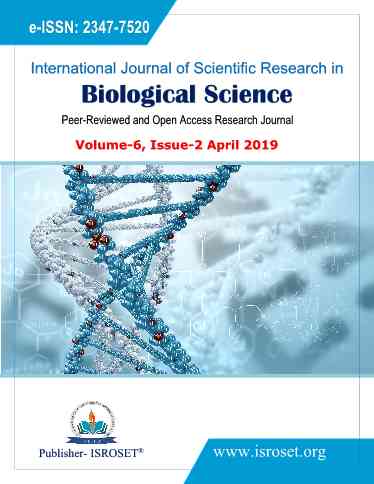Influence of socio-economic and behavioral risk factors on malaria prevalence: A study from Adilabad District of Telangana State.
Keywords:
Malaria, Vector borne diseases, Prevalence, Infection, Parasites, Preventive measuresAbstract
The major burden of vector-borne disease in India comes from malaria. The biggest burden of malaria in India is often observed in backward or poor and remote parts of the country which might be due to the limited access to medical treatment or lack of knowledge on mode of malaria transmission and its preventive measures. A better understanding of the socio-economic, behavioral risk factors and knowledge gaps related to malaria infection are essential when developing coherent and effective policies Socio economic information was collected from 4872 participants in three PHCs (Jainoor, Sirpur, Lingapur) irrespective of their age and gender. The occurrence of malaria was significantly higher in individuals those don’t have schooling/primary education compared to secondary/higher education level participants. Malaria infection was observed to be elevated in households with farmers head as compared to households with daily labour or employs. The present study demonstrates that those variables related to education and poor health infrastructure are the most important factors in reducing the risk of malaria infection.
References
Lal Shiv, GPS Dhillon, C.S Agarwal, “Epiderniology and control of malaria”, Indian Journal of Pediatrics, Vol. 66, Issue.3, PP. 547-54, 1999.
CJ. Palmer, “Evaluation of the optimal test for Rapid diagnosis of plasmodium vivax and plasmodium falciparum malaria”, Journal of Clinical Microbiology, Vol. 36(1), Issue.8, PP. 203-6, 1998
D. Gwatkin , M. Guillot, “The burden of disease among the global poor: current situations, future trends, and implications for strategy”, American parasitology, Vol. 12, Issue.9, PP. 4-8, 2000.
JL. Gallup, JD. Sachs, “The economic burden of malaria”, American Journal of Tropical Medicine, Vol 64, Issue.6, PP,85–96, 2001.
B. Rabha, D. Goswami, S. Dhiman, NG. Das, PK. Alukdar, MJ. Nath, I. Baruah, RK. Bhola, L. Singh, “A cross sectional investigation of malaria epidemiology among seven tea estates in Assam, India”, Journal of Parasitic Disease, Vol, 36, Issue.12, PP, 1–6, 2011.
K. Yadav, MJ. Nath, PK. Talukdar, PK. Saikia, I. Baruah, L. Singh, “Malaria risk areas of Udalguri district of Assam, India: a GIS-based study”, International Journal of Geographical Infermation Science, Vol. 26(1), Issue.5, PP. 123–131, 2012.
JD. Sachs, “Vector borne disease control strategies”, International journal of vector born diseases, Vol. 2, Issue.9, PP. 355–488, 2012.
DG. Ayele, TT. Ewotir, HG. Mwamb, “Prevalence and risk factors of malaria in Ethiopia”, Malaria Journal , Vol. 11, Issue.8, PP. 195-196. 2012.
A. Hiscox, P. Khammanithong, S. Kaul, P. Sananikhom, R. Luthi, N. Hill, PT. Brey, SW. Lindsay, “Risk factors for mosquito house entry in the Lao PDR”, PLoS One, Vol. 8(5), Issue.3, PP. 62769, 2013.
S. Mukherjee , C. K. Pradhan , I. Chakraborty , A. Saha , S. Thakur , S. Sahu, “General health status and morbidity pattern of bus drivers in West Bengal”, International Journal of Scientific Research in Biological Sciences, Vol.5, Issue.4, pp. 29-39, 2018.
A. Lowassa, HD. Mazigo, AM. Mahande, BJ. Mwangonde, S. Msangi, MJ. Mahande, EE. Kimaro, E. Kweka Elisante, EJ. Kweka, “Social economic factors and malaria transmission in Lower Moshi, Northern Tanzania”, Parasitic Vectors, Vol. 5, Issue.2,PP. 129. 2012.
Downloads
Published
How to Cite
Issue
Section
License

This work is licensed under a Creative Commons Attribution 4.0 International License.
Authors contributing to this journal agree to publish their articles under the Creative Commons Attribution 4.0 International License, allowing third parties to share their work (copy, distribute, transmit) and to adapt it, under the condition that the authors are given credit and that in the event of reuse or distribution, the terms of this license are made clear.







